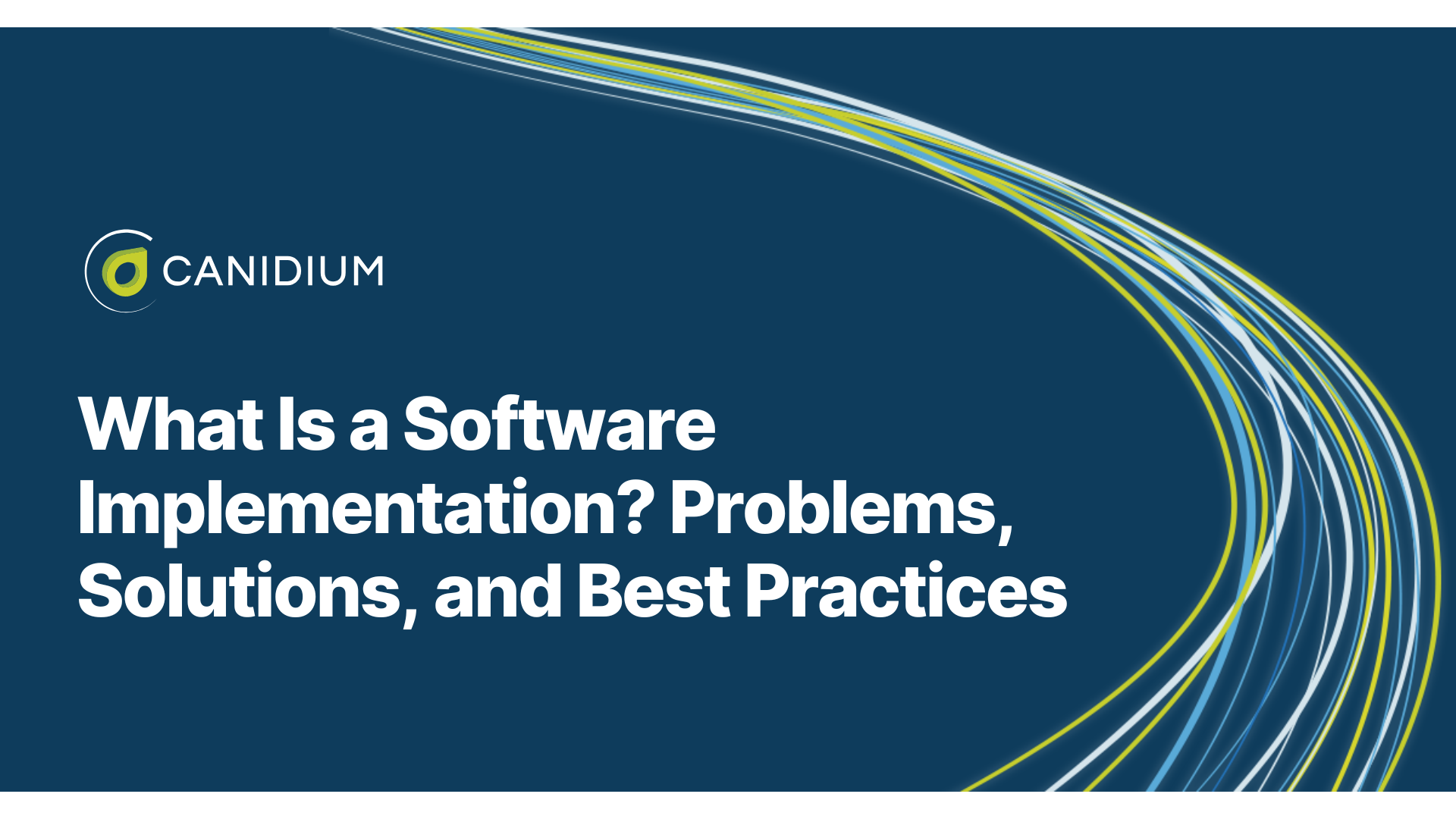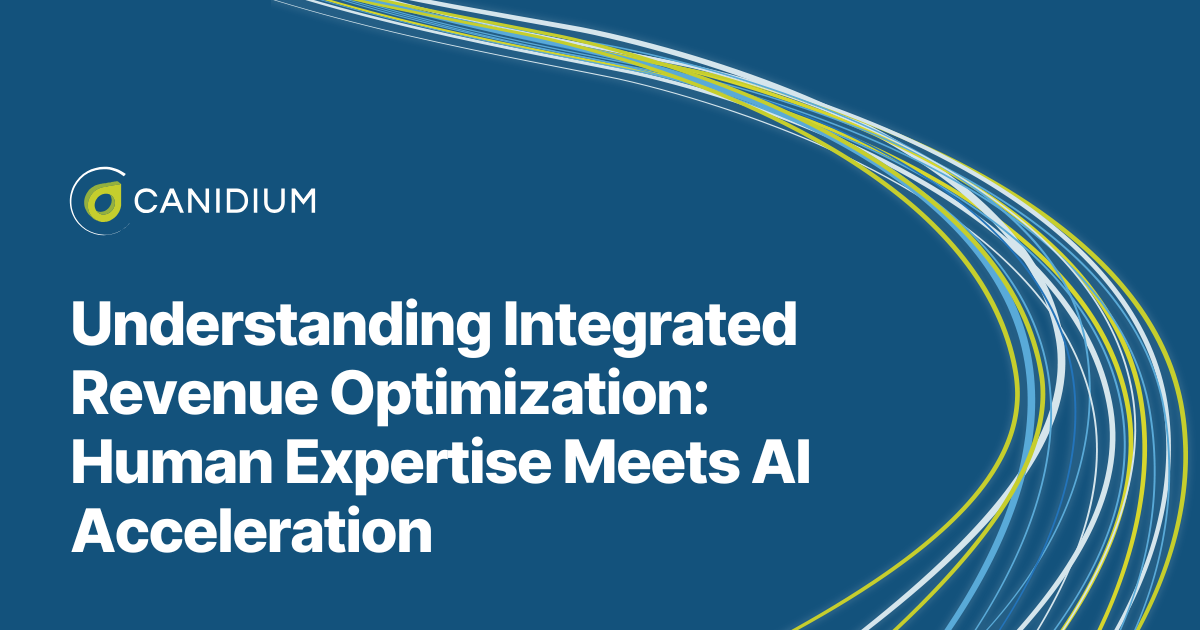A lot of companies think they have a software problem. But, most of the time, they actually have an implementation problem.
Imagine you buy a powerful platform like an incentive compensation engine, a pricing solution, a CPQ tool, or an agent lifecycle platform, and a year later, people are still exporting to Excel, emailing approvals, and arguing about “whose numbers are right.” The software is there. The value isn’t.
That gap between what the tool could do and what it actually does for your business is exactly what software implementation plans are about, and why effective project management is vital.
To help you maximize value on your digital transformation, this article breaks down what software implementation really is, why it’s so hard, and why getting it right matters so much.
What is a software implementation?
In the simplest terms, software implementation is the work of taking a newly purchased system and making it part of how your teams operate every day. It is the structured transformation that spans much more than technical installation and data migration. A software implementation usually includes:
Discovery and alignment
- Clarifying business goals and performance metrics
- Understanding current processes, data, and pain points
- Aligning stakeholders across business, IT, finance, sales, and operations
Solution design
- Mapping processes into the new software platform (e.g., comp plans into Xactly, pricing rules into Pricefx, producer onboarding into SAP APM)
- Designing unified data models, software integrations, and roles
- Defining reports and downstream dependencies
Build and system configuration
- Configuring rules, automated workflows, approvals, and calculations
- Building integrations to CRM, ERP platforms, HRIS, policy admin, data warehouse, etc.
- Setting up environments, security tools, permissions models, and controls
Testing and validation
- Unit, system, and regression testing
- Parallel runs (old vs. new) for critical flows like commissions and pricing
- User acceptance testing to confirm the system behaves like the business expects
Change management and training
- Communicating what’s changing, why, and when in the implementation timeline to increase user adoption
- Offering user training for different personas (admins, business users, leaders)
- Updating SOPs and internal documentation for the support team
- Providing training materials on the uniquely configured solution
Go-live and stabilization
- Cutover planning and execution
- Hypercare—closely monitoring issues in the first weeks/months
- Tuning performance, reports, and usability based on user feedback
Continuous improvement via managed services
- Iterating based on feedback and new business needs
- Incorporating new product features and vendor releases
- Extending to new regions, lines of business, or channels
When people say, “we implemented new software,” they’re really saying: we changed how our organization operates, using this tool as the backbone.
Why a software implementation is not the same as “installation”
It’s tempting to think of a software implementation as a one-time IT project: stand up environments, configure a few things, hand it over, done.
That mindset is a big reason so many initiatives fail. Around 70% of major transformation initiatives fail to meet their objectives, not because the software is incapable, but because execution falls short.
What’s going wrong? Usually one (or more) of the following:
- The tool is installed, but processes are not redesigned
- Data is migrated, but not cleansed or governed
- Integrations are built, but edge cases aren’t handled
- Users are trained on “where to click,” but not on how their role is changing
- Ownership for ongoing optimization is unclear
In other words: the tech goes in, but the operating model does not change.
A true software implementation treats software as one element of a bigger transformation that includes process, data, controls, and people.
The stakes: why your software implementation matters so much
1. Because the default is failure or “zombie” systems
The stats are brutal. Large IT projects run, on average, 45% over budget and 7% over schedule, while delivering 56% less value than expected.
On top of outright failures, there’s a quieter problem: “zombie” software implementations. These are systems that technically went live, but:
- User adoption is low
- workarounds (Excel, email, offline approvals) persist
- leaders don’t trust the performance metrics
- enhancements get pushed off because “we’re just trying to keep the lights on”
The cost of these half-finished journeys depends on the goals of your digital transformation, but they often show up in:
- missed revenue (slow quoting, uncompetitive pricing, delayed onboarding)
- margin leakage (discounting without guardrails, inaccurate commissions)
- compliance risk (manual producer/license checks, audit gaps, SOX issues)
- employee fatigue and churn (“transformation fatigue” from constant rework)
Research recently estimated that organizational and software complexity is draining about 7% of annual revenue on average.
Implementation is where you either protect that revenue—or lose it.
2. Because ROI depends on how you implement, not just what you buy
From a CFO or PE perspective, software is a capital or operating investment that’s supposed to produce measurable outcomes: faster cycle times, fewer errors, better pricing, cleaner data, lower operational cost, higher sales productivity.
But those outcomes show up only if the implementation connects the tool to your business levers.
For example:
Incentive compensation / SPM & ICM
The software can automate complex plans, but unless you rationalize your plan design, map your data, and validate calculations against real scenarios, you can still end up with comp disputes and shadow accounting.
Pricing and revenue management
A pricing platform can model elasticity and optimize discounts, but if sales can override guidance without controls or CRM integration, you’ll still see margin erosion.
CPQ and quote-to-cash
A CPQ tool can configure complex bundles, but if it’s not aligned with billing, finance, and approvals, you’ll still have downstream credit/rebill work and delayed revenue.
Producer and distribution management
A producer management solution can centralize licensing/appointments, but if workflows, hierarchies, and letters aren’t automated, ops teams still chase spreadsheets and manual approvals.
That translation between capability and financial outcome is exactly what a good implementation delivers.
3. Because change management is often the difference between success and failure in software implementations
One of the strongest correlations in recent research is between change management quality and project management success: Prosci’s global research found that projects with excellent change management are about 7x more likely to meet their objectives than those with poor change management. And, those same projects are nearly 5x more likely to be on or ahead of schedule, and 1.5x more likely to stay on or under budget.
Effective software implementation plans build change management into the core of the project:
- clear stakeholder maps and personas
- communication from project managers tailored for each group (“what’s in it for me?”)
- user training programs that cover both “how” and “why”
- leadership alignment on goals and successful performance metrics
Without that, you’re just dropping a new interface on top of old habits.
4. Because complexity and tool sprawl are already costing you
Most organizations don’t suffer from a lack of software; they suffer from software that doesn’t work together.
Recent research into enterprise software complexity found that:
- Employees are juggling too many different tools and channels, losing seven hours of productivity each week to context switching.
- Nearly one-fifth of software budgets are wasted on tools that are unused or underused, including failed implementations.
Thoughtful IT implementations directly attack this:
- rationalizing which systems should own which processes
- consolidating overlapping tools where possible
- designing integrations so users see one source of truth, not five dashboards
- simplifying user journeys so common tasks are fast and consistent
Done well, software implementation plans and software integrations reduce complexity, even as you add powerful new capabilities.
5. Because risk, compliance, and trust live in the implementation details
In areas like incentive compensation, producer management, and pricing, the cost of getting things wrong goes beyond annoyance:
Financial risk
- Miscalculated commissions or retroactive adjustments
- Revenue leakage from inconsistent discounts or incorrect pricing
Regulatory and compliance risk
- Paying out to unlicensed or unappointed producers
- Incomplete audit trails for approvals and exceptions
- SOX or internal control failures around revenue recognition
Reputational risk
- Eroded trust between sales and finance
- Producer frustration with slow onboarding, unclear statements, or payment errors
- Customer dissatisfaction from pricing errors or contract disputes
These risks are not solved by the software existing; they’re solved by the way it is implemented:
- automated validations and workflow gates
- rules that reflect real regulatory requirements
- role-based access and approvals
- complete, auditable histories of changes and payouts
When implementation focuses on controls and governance—not just “getting to go-live”—you end up with a system that leaders and auditors trust, not one they work around.
6. Because your org will change – and your implementation needs to keep up
No modern business is static. A robust implementation anticipates that reality by:
- building configurable structures (territories, hierarchies, bundles) instead of hardcoding rules
- designing integrations that can handle additional entities, regions, or product lines
- creating clear admin roles and runbooks so you’re not dependent on one hero developer
- leveraging vendor best practices and reference architectures, rather than bespoke one-offs
The payoff is huge: when strategy changes, you adjust configuration instead of launching a new multi-year IT initiative.
What this looks like with a specialist implementation partner
For most organizations, especially those running complex revenue and distribution models, doing all of this in-house is a big ask. You’re asking your teams to:
- master the vendor platform
- design integrated business processes
- manage data and integration complexity
- lead rigorous change management
- maintain and enhance the system long term
A specialist implementation and managed services partner, like Canidium, exists to make that manageable and repeatable:
Platform expertise + business context
- Deep experience with partner vendor technologies and related ecosystems
- Playbooks for common patterns, such as pay plan migrations, tariff and price optimization, complex B2B quoting, and producer lifecycle automation
Proven software implementation frameworks
- Standardized phases, gate reviews, and risk controls
- Reference architectures for integrations, data migration, and security
- Testing and validation approaches tuned to high-stakes areas like commissions and pricing
Change and adoption built in
- Role-based training plans for admins, power users, and field users
- Clear governance models so you know who owns what after go-live
- Ongoing advisory to help align the platform to evolving strategy
Managed services and continuous improvement post system implementation
- Post-go-live support and enhancement capacity
- Release management as vendors ship new features
- Metrics and dashboards to track adoption, errors, and business outcomes over time
In other words, the right partner treats implementation not as a one-time project, but as the beginning of an operating model where your software keeps delivering value.
Bringing it all together
A software implementation is not just a technical rollout. It’s the disciplined process of turning a licensing decision into tangible, sustained business outcomes.
It matters because:
- The default outcome of complex software and transformation projects is failure or underperformance
- ROI lives in the implementation—the way you design processes, data, controls, and experiences
- Strong change management dramatically increases your odds of success
- Poor implementations quietly drain budget, revenue, and employee energy
- Risk and compliance are enforced (or not) through implementation choices
- Your ability to adapt your go-to-market strategy depends on how you build for change
For organizations investing in pricing, CPQ, incentive compensation, and producer management platforms, implementation is where you decide what your ROI will be. Significant implementations determine whether these systems become yet another piece of tech that people grudgingly tolerate or the backbone of a modern, efficient, compliant, and data-driven revenue engine.
Getting that right isn’t easy. But it is repeatable, especially when you treat your software implementation as a strategic capability, and when you work with partners whose whole business is helping you close the gap between software potential and real-world results.







